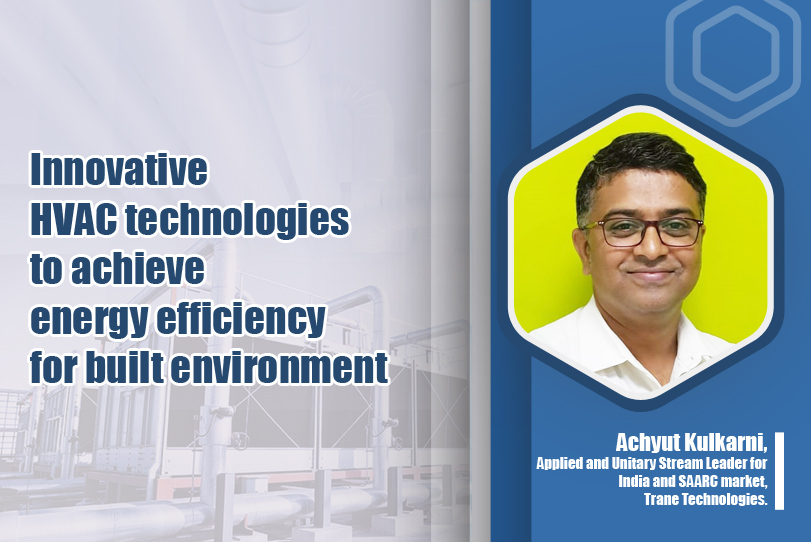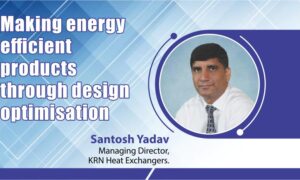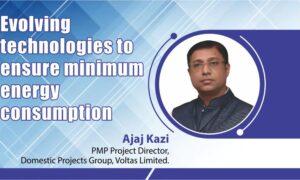ICAP goal is reduction in cooling demand across all sectors by 20 to 25 percent by 2037-38.
I think this EE (Energy Efficiency) is very, very important in today’s scenario, it’s not just the energy that needs to be focused on but also the environment. We had excellent information given to us with reference to the refrigerants. We had good information passed on with reference to the energy levels in terms of free cooling, and so on so forth. I think it is all in all, I believe very strongly that both energy and environment are two key factors that are actually driving this sustainable environment.
Quickly, I would just like to go through I-CAP, which is India’s cooling action plan. One best thing and the most important factor is that India is the first country in the world to develop such a document. It is freely available on the website, you can just type icap on Google and you will be able to download the copy of a very interesting document, you can have good insights about the ongoing trends in HVAC, ongoing challenges in HVAC and how India plans to overcome those challenges. It is very well documented; very, very informative. And it is very good to read.
Cooling action plan: Five goals
India Cooling Action Plan recognises 5 goals. Three out of five goals that emerge from this document are the reduction in cooling demand across all sectors by 20 to 25 percent by 2037-38; reduction in cooling energy requirements by 25 to 40 percent by the year 2037-38 and reduction of the refrigerant demand by 25 to 30 percent by year 2037-38. So, in total there are around five goals. Out of five; three goals clearly emphasise on the cooling demand, cooling energy and the refrigerant demand. The focus is very clear, we need to follow certain guidelines which are already published and which are readily available, which will definitely help us to achieve these goals as stated in the cooling action plan. The overarching goal of ICAP is to provide sustainable cooling and thermal comfort for all while securing environmental and socio-economic benefits for the society. Other two are: Recognition of “cooling and related areas” as a thrust area of research under the national science and technology program to support development of technological solutions and encourage innovation challenges and training and certification of 100,000 servicing sector technicians by year 2022-23, synergizing with the Skill India Mission.
Other is the trajectory plan that we have. If you look at the growth in terms of the sector wise growth in the cooling demand, it is enormous. From 57 percent of what we saw in 2017- 18, that’s expected to grow to 74 percent and that is only with respect to space cooling in buildings. Likewise, you can see the refrigeration, transport, cold chain etc. Okay. I just want to write about something very interesting again, which is very, very close to our heart. Trane Technologies has taken a huge leap in terms of both energy and environment.
And definitely, it is what it takes to make a huge difference. What are those plans we have? We have a plan to reduce 61 percent of the greenhouse gas with reference to the refrigerant footprints we all heard about the refrigerants in terms of the GWP, ODP, so on forth. So 61 percent reduction is the target that we have and 24 percent increase in the energy efficiency in 2019 compared to 2013 baseline we have already achieved. We are designing lots of good energy efficient products that are hitting the market; 50 percent reduction in greenhouse gas emissions intensity in our operations since 2013 baseline so we have remapped our facilities, we have remapped our factories. Thereby we plan to reduce 50 percent of our greenhouse gas emissions within our operations.
Fortunately, we are in a good company, we have a lot of other companies like Siemens and all; a lot of companies are marching towards this good initiative and making sure that they reduce the carbon footprint. Now, just to brief, what is done so far and what has happened so far, we are able to reduce. Almost, we are able to reduce close to 7.7 million metric tonnes of carbon equivalent compared to 2019 baseline in 2020. So, the tasks that we had in front of us, we are already halfway through we are already on plan. And we are sure that we are going to achieve these numbers much ahead of the deadline that has been set forth. One important message from our chairman, Mike Lamarck, is that if you just go through it, our actions are predicated on a strong belief that one company can change an industry and one industry can change the world. And it’s really happening.
Just to go straight on the topic of energy efficiency. The main factor we discussed on the TCO was the total cost of ownership sometime back. It’s not just the lowest but ownership is not the first investment, what we do, it’s much beyond that. Today, if you look at it 10 percent of the lifecycle cost is on the design and build and 90 percent of the life’s cost goes to operate and maintaining those equipments of the buildings what we are into; and one thing return on investments that is ROI is not on the lowest first cost always.
Efficiency
If you look at the focus, it’s not just the chillers alone or the cooling towers alone, it’s the complete plant. It’s not like typically we see that we select the most efficient chillers but forget to select the right equipment like it could be pumps, cooling towers, piping design all that so high performance chillers is definitely not a high performance chillers plant. Okay, some of the recommended design strategies for a high performance chillers plant use super high efficiency chillers pump cooling towers, we have an ASHRAE benchmark, we have ASHRAE green tide benchmarks, we have a lot of benchmarks, we have a lot of guides that are available where they mentioned about the minimum efficiency requirements that have been listed.
But definitely, we have much more efficient products that are available in the market we do not have to just meet but also try to stretch more than what is available to do better than ASHRAE 90.1 requirements, low flow low pressure chilled water and condenser water system plan to go for large delta systems when we say the large delta even the ASHRAE 90.1 2016 guidelines is that no need to design a chillers for 10 degree delta, you can extend it up to 15 thereby reducing the pipe size, the pump size, the pressure drops and so on so forth. Just try to work on those lines try to get more and more feedbacks available from these particular guidelines and try to implement them variable primary chilled water flow systems are the typically the VPF systems which is now become very popular, but still we have some systems which are still running on the primary and secondary system I think better to switch on to this new one which is the variable primary flow definitely will go on to say 20 to 25 percent of the power cooling tower optimisation most important.
We select the right pump, we select the best efficient chillers and if you don’t select the right cooling tower, then it becomes a problem because the efficiency of the chillers again depends upon the cooling tower at VSD. And try to see if you can extend the heat recovery capacity of the cooling tower. I mean if you can size a slightly larger cooling tower, then the requirement will definitely yield good benefits in terms of the power consumption of the chiller configuration, which is very, very important. No need to go for a standard configuration you try and mix and match depending upon your load pattern depending upon the applications or try and mix to see whether you can have a combination.
A lot of information is available with each and every chiller manufacturer, try and get the configuration done, pros and cons and then assign the right one for your building for your needs. Most important is extensive continuous high precision monitoring, which is very, very important. We need to have the control systems in place and automation in place. That will definitely help us in order to measure the current efficiency level and the benchmarks of what is being said, whether we are on the benchmark or we are not on the benchmark that’s very important to understand. So good design and smart operation definitely will lead us to a system level performance.
Cookie Consent
We use cookies to personalize your experience. By continuing to visit this website you agree to our Terms & Conditions, Privacy Policy and Cookie Policy.















